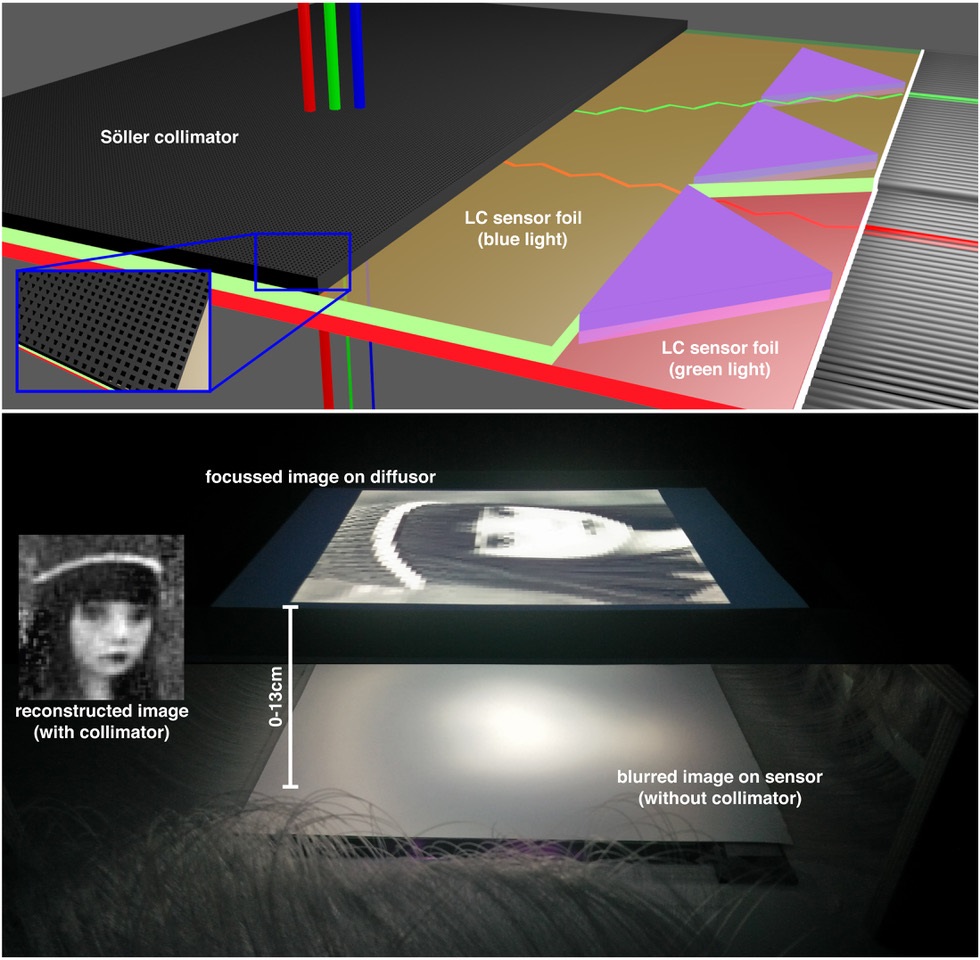2017/07/31
The advantage: a significantly more compact size. Fields of application: robots, industrial equipment machines, and cars.
Today’s cameras essentially consist of an image sensor and a lens system that uses a sensor to visually focus on the image one would like to capture. These cameras can often be large and bulky. For years, scientists at the Institute for Computer Graphics (JKU Linz) have been conducting research to create a new kind of image sensor unlike conventional CMOS or CCD chips – transparent, extensive, and flexible. They consist of 300 micrometer thin plastic film that captures light and converts it into a certain optical pattern. This pattern can be converted into an imagine using machine learning (artificial intelligence).
The project’s future challenge is now to find ways to visually capture more distant scenes on the sensor film. Whereas normal cameras have a lens objective, the lens-less JKU approach is to use an additional layer of film. The resulting, flexible film camera supports so-called ‘smart skin sensors’ to help autonomous robots, industrial machinery, and cars scan their immediate environment.
Increasing Optical Depth of Field
The first approach has now been published in the renowned journal “Optics Express”. It uses a lattice structure over the sensor film intended to filter (“collimate”) the incident light into as many parallel parts as possible. These so-called Söller collimators have been used in fields of astronomy and in medical imaging (x-ray optics). In the JKU approach, Söller collimators increase the film camera’s optical depth.
The prototype currently uses a six-millimeter thick collimator that was made using a 3D printer. It allows for the reconstruction of sharp images up to a distance of 13 centimeters. In collaboration with the Karlsruhe Institute of Technology (KIT), JKU researchers hope to implement a far thinner (one to 300 micrometers) and more light efficient collimator by means of x-ray lithography.
Other approaches to lens-less imaging will also be pursued in the future, such as, for example, by refractive and diffractive film optics.
The project will be funded for the next two years by the Linz Institute of Technology (LIT) at the Johannes Kepler University in collaboration with Rice University (USA).
Additional information:
Koppelhuber, A. and Bimber, O., A Thin-Film Camera using Luminescent Concentrators and an Optical Söller Collimator, Opt. Express 25(16), 18526-18536, 2017
Link: https://doi.org/10.1364/OE.25.018526

Focusing Through a Lattice Structure: The JKU Presents a Lens-Less Camera
The Institute for Computer Graphics at the Johannes Kepler University Linz is working on developing a lens-less camera.

Top: 1 mm thick film camera consisting of 3 layers (Söller collimator for optical imaging and two sensor layers to record different color sections of the images). Bottom: Transposed experiment set up – the defocused image 13 cms away from the sensor can be sharply reconstructed with the Söller collimator











